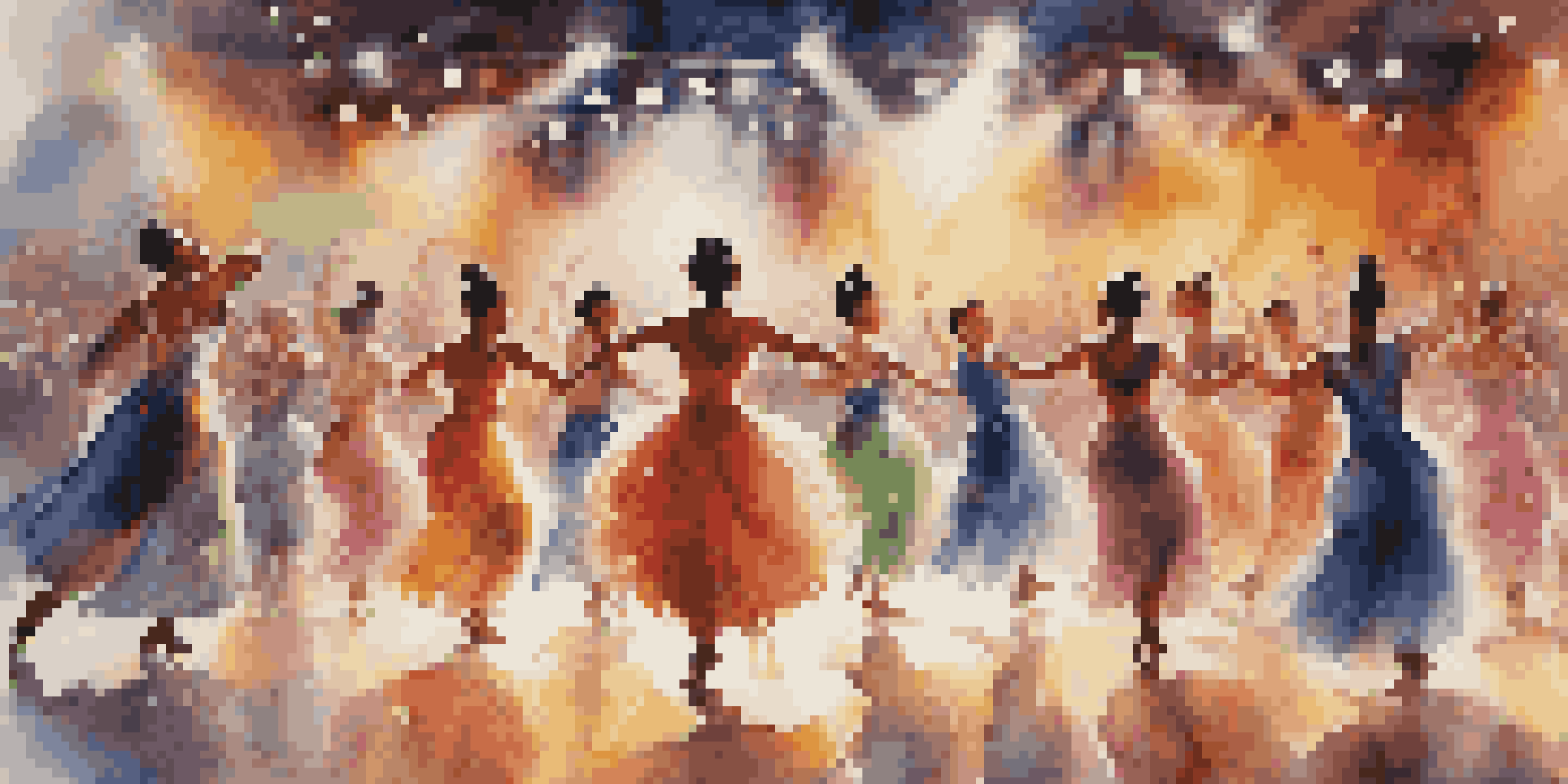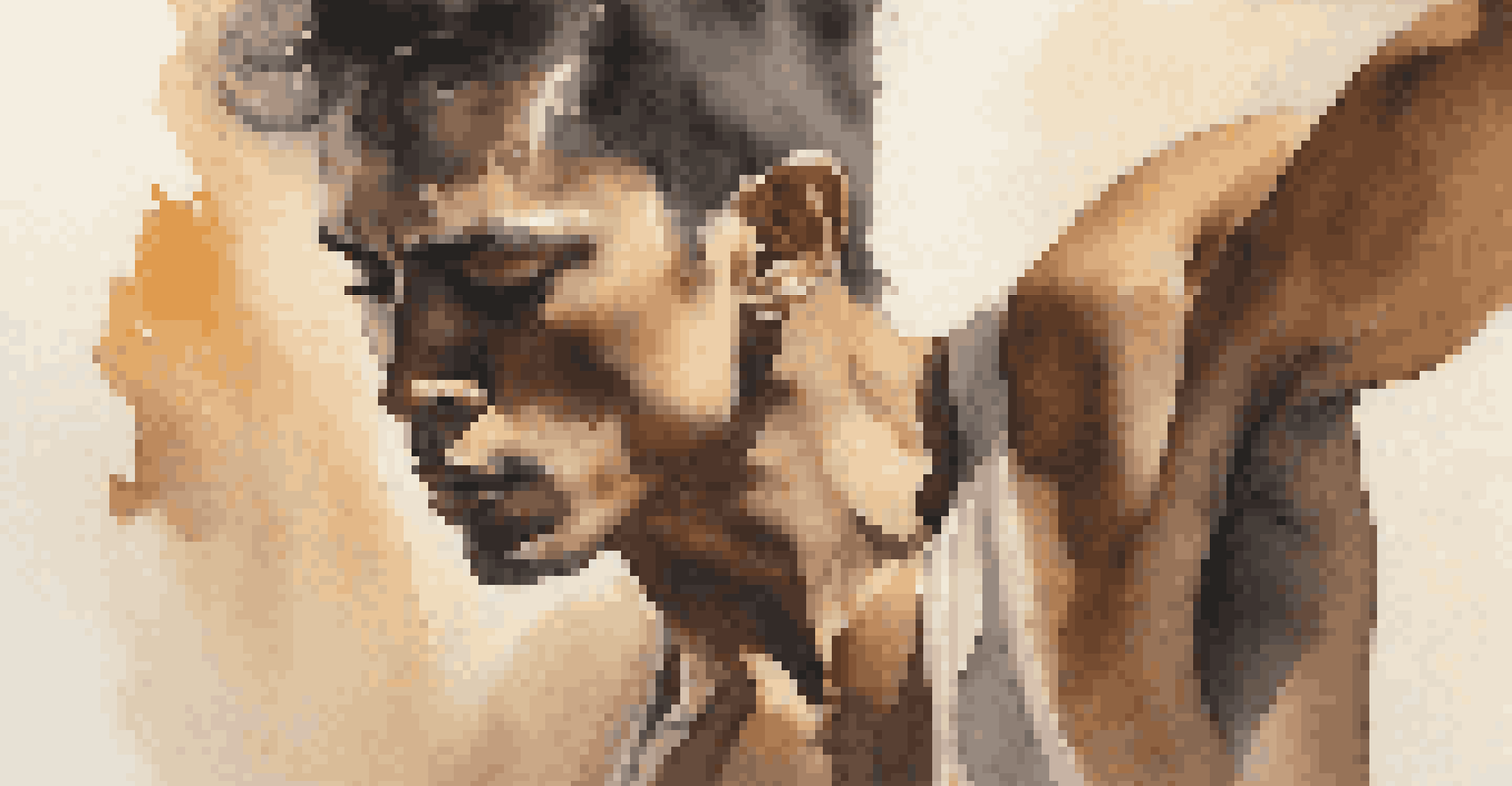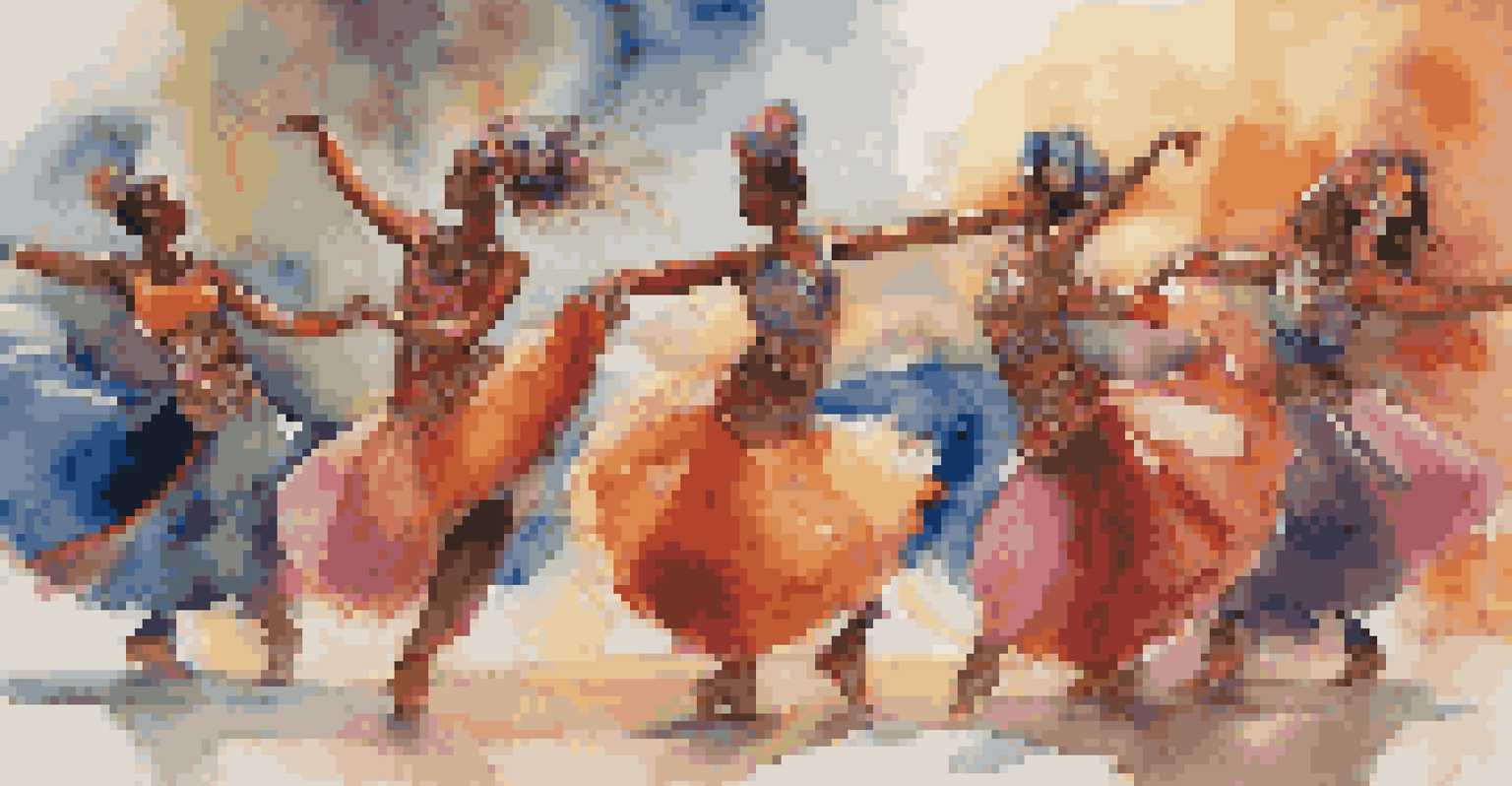Dance Competitions: Gender Dynamics in Performance Arts

Understanding Gender Dynamics in Dance Competitions
Dance competitions, much like many performance arts, often reflect the broader societal dynamics of gender. These events can showcase not only talent but also the roles and expectations placed on different genders within the art form. When observing a competition, one might notice how male and female dancers are often cast in different roles, which can shape their experiences and opportunities.
Dance is the hidden language of the soul.
For instance, female dancers may frequently be seen in more graceful, lyrical pieces, while males might dominate in athletic and power-driven performances. This dichotomy can influence perceptions of strength and vulnerability, pushing certain gender stereotypes to the forefront. Additionally, these dynamics can impact the way audiences perceive and judge performances, leading to different expectations based on gender.
As we delve deeper into this topic, it's essential to recognize how these patterns not only affect individual dancers but also contribute to the overall culture of dance. By understanding these dynamics, we can work towards creating a more equitable and inclusive environment in the realm of dance competitions.
Historical Context of Gender Roles in Dance
To grasp the present dynamics in dance competitions, we must look back at the historical context of gender roles in the performance arts. Traditionally, dance has been a reflection of societal norms, where men often took on leadership roles while women were seen as the supporting figures. This legacy continues to shape the ways in which dancers are trained and showcased today.

For example, ballet, with its European roots, has a rich history of gendered roles, often placing women in positions that emphasize grace and beauty, while men display strength and dominance. These historical precedents have set the stage for modern competitions, where similar patterns can be observed. Understanding this history helps to highlight the ongoing struggles for equality within the art form.
Gender Roles Shape Dance Competitions
Dance competitions often reflect societal gender dynamics, influencing the roles and expectations placed on male and female dancers.
Moreover, as society evolves, so too do the expectations and definitions of gender, leading to shifts in how dance is performed and perceived. Breaking away from traditional roles can empower dancers to express their identities more freely, paving the way for new narratives to emerge within the dance community.
The Impact of Stereotypes on Performance
Stereotypes play a significant role in shaping the experiences of dancers in competitions. These preconceived notions can dictate the types of performances that are praised or criticized based on the dancer's gender. For instance, a male dancer performing an emotional piece may be viewed as less masculine, while a female dancer exhibiting strength might be seen as defying traditional norms.
The only way to make sense out of change is to plunge into it, move with it, and join the dance.
This influence of stereotypes can create a pressure cooker environment where dancers feel compelled to conform to specific ideals to gain recognition. Such expectations can stifle creativity and limit the range of expressions in performances, ultimately affecting the art form. By challenging these stereotypes, dancers can reclaim their narratives and explore a broader spectrum of movement and emotion.
Moreover, audiences also play a crucial role in perpetuating or dismantling these stereotypes. When viewers celebrate diverse expressions of gender in dance, it encourages dancers to push boundaries and explore beyond conventional roles. This shift can foster a more inclusive atmosphere in competitions, enriching the performances presented.
The Role of Competitions in Shaping Gender Perceptions
Dance competitions serve as pivotal platforms that can either reinforce or challenge gender dynamics within performance arts. These events often highlight certain styles and narratives that align with traditional gender roles, but they also have the potential to be arenas for innovation and change. By celebrating diverse performances, competitions can foster a more equitable representation of all genders.
In recent years, many competitions have begun to acknowledge the need for inclusivity, creating categories that encourage diverse expressions of gender. This shift not only allows dancers to showcase their unique talents but also challenges audiences to rethink their perceptions of gender in dance. As more competitions embrace these changes, they can act as catalysts for broader acceptance and understanding in the performance arts.
Stereotypes Affect Dancer Experiences
Preconceived notions about gender can dictate how performances are perceived, pressuring dancers to conform to traditional ideals.
Furthermore, the visibility of diverse performances can inspire younger generations of dancers to explore their identities and push against the boundaries of traditional roles. By witnessing a variety of expressions, aspiring dancers can envision a more inclusive future within the world of dance, where talent is celebrated regardless of gender.
The Influence of Media on Gender Dynamics in Dance
Media plays a significant role in shaping public perceptions of gender in dance, often amplifying existing stereotypes or introducing new narratives. Dance shows, competitions, and social media platforms can highlight certain styles and performances that align with traditional gender roles, influencing both dancers and audiences alike. For instance, popular television shows may portray specific gender norms that can impact how dancers choose to present themselves in competitions.
Moreover, social media has become a double-edged sword in this context. While it can promote diverse representations of gender in dance, it can also perpetuate narrow standards of beauty and performance. Dancers may feel pressure to conform to certain aesthetics or styles that are trending online, which can impact their artistic choices and self-expression.
Ultimately, the way gender is portrayed in media can have a lasting impact on the dance community. By encouraging a more diverse and inclusive representation of gender in dance media, we can foster an environment where all dancers feel empowered to express their true selves without fear of judgment or stereotyping.
Breaking Barriers: Empowerment Through Dance
Despite the challenges posed by traditional gender dynamics, many dancers are finding ways to break barriers and empower themselves through their art. Dance offers a unique platform for self-expression, allowing individuals to challenge societal norms and redefine what it means to perform. This empowerment can be particularly impactful in competition settings, where dancers can showcase their true selves and push against stereotypes.
For instance, some competitions now feature categories that encourage gender-neutral performances, allowing dancers to explore their identities freely. This inclusivity not only enriches the competition but also inspires others to embrace their individuality. By creating spaces for diverse expressions, dance becomes a powerful tool for social change and personal empowerment.
Media Influences Gender Perceptions
Media portrayal of gender in dance can amplify existing stereotypes while also providing a platform for diverse representations.
Moreover, the stories of dancers who have defied traditional roles serve as inspiration for many. These narratives highlight the journey of self-discovery and confidence-building that can come from embracing one's unique identity in the world of dance. As more dancers share their experiences, the collective voice for change grows stronger, paving the way for a more inclusive future in performance arts.
Looking Ahead: The Future of Gender in Dance Competitions
As we look to the future, it's crucial to continue advocating for inclusivity and equality within dance competitions. The ongoing dialogue around gender dynamics can help push for policies and practices that promote diverse expressions in performance arts. By actively engaging with these issues, the dance community can create a more supportive environment for all dancers, regardless of gender.
Organizations and competition directors have a pivotal role to play in this evolution. By implementing gender-neutral categories and encouraging a broader range of performances, they can set the stage for future generations of dancers. This proactive approach will not only enrich the art form but also foster a culture of acceptance and celebration of diversity.

Ultimately, the future of gender in dance competitions lies in the hands of the dancers, audiences, and organizers who are willing to challenge norms and embrace change. Together, we can create a dance world where every individual feels valued and celebrated for their unique contributions, paving the way for a more vibrant and inclusive artistic community.